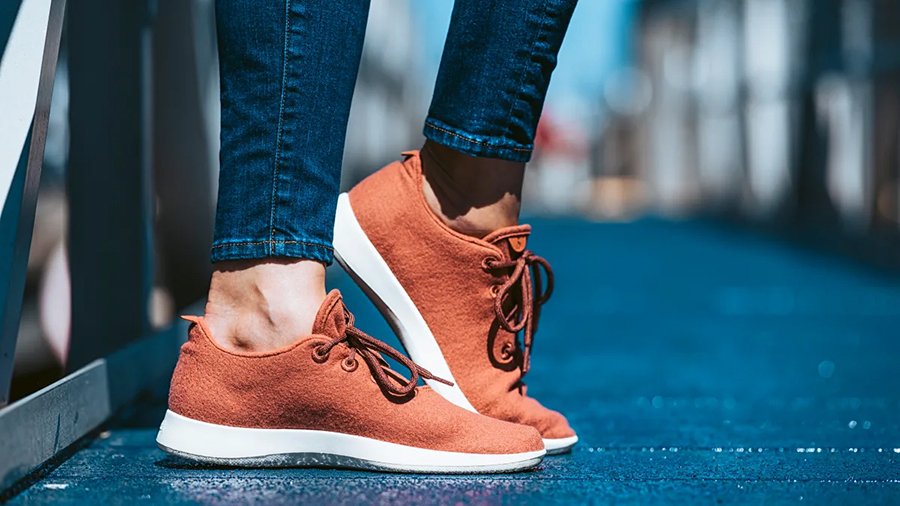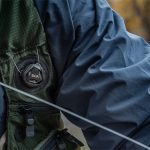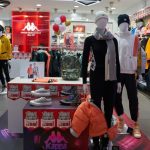Allbirds reported a loss in the second quarter, but the period marked the troubled eco-friendly sneaker seller’s second quarter in a row of top- and bottom-line results above expectations. Company officials told analysts that its transformation efforts included a refocus on core styles, including the Wool Runner and Tree Dasher, which had made progress.
“We laid out a road map for our strategic transformation back in March. And now, two quarters into our work, we have gained traction and are solidly on track to drive toward profitability expectations,” said Joey Zwillinger, CEO, on a call with analysts.
Notable benefits in the quarter came from Allbird’s efforts to reduce inventory levels due to more selective and disciplined buys and from using operating cash and cost controls.
Shares of Allbirds on Wednesday jumped 38 cents, or 29.7 percent, to $1.66. The stock continued to trade well below its price of $15 when it went public in November 2021.
The brand’s struggles are primarily the result of its extension into new product categories, including athletic apparel and technical shoes that did not resonate with its core customers.
Q2 Revenues Decline 10 Percent
Revenues in the second quarter ended June 30 decreased 9.8 percent year over year to $70.5 million, topping Allbird’s guidance in the range of $64 million to $69 million. Sales were up 3.8 percent compared to Q221.
The year-over-year decrease was primarily attributable to a decrease in average selling price, driven by promotional activity, and an estimated $700,000 negative impact from foreign exchange (FX).
Adjusted EBITDA showed a loss of $18.3 million compared to a loss of $20.8 million in the second quarter of 2022. Results were just ahead of Allbird’s forecast calling for a loss in the range of $20 million to $23 million.
Gross margins jumped to 42.8 percent compared to 36.1 percent year over year, primarily due to lower inventory write-downs, reduced freight and logistics costs, and a higher mix of international sales, partially offset by the decrease in average selling price.
SG&A expenses grew 7.9 percent to $46.2 million, reaching 65.6 percent of revenue compared to 53.4 percent a year ago. The increase is primarily attributable to 16 additional stores opened since Q222, including rent and utility expenses, depreciation expenses and headcount.
Marketing expenses were reduced 20.9 percent to $12.5 million, or to 17.8 percent of revenue from 20.2 percent a year ago. The decline was due to decreased digital advertising spend.
Restructuring expenses totaled $1.0 million, or 1.5 percent of revenues, in the quarter compared to no expense in the second quarter of 2022, primarily as a result of severance payments associated with the execution of the strategic transformation plan announced in March 2023.
The net loss was $28.9 million, or 19 cents a share, compared to a loss of $29.4 million, or 20 cents, in the second quarter of 2022.
Transformation Plan Update
Zwillinger provided an update on progress made on the company’s four key pillars under its strategic transformation plan:
- Reigniting product and brand;
- Optimizing U.S. distribution and four-wall profitability in stores;
- Evaluating a transition of international direct go-to-market strategy toward a distributor model; and
- Improving overall gross margin and leverage on operating expenses.
The most evident improvement was in the last pillar through improved execution. Inventory levels declined 24 percent year-over-year, ending the quarter below $95 million for the first time in two years. Zwillinger said, “This is the result of prudent financial and inventory planning and our balanced approach to meeting the consumer where they are on price while maintaining brand integrity.”
Cost savings also came from materials optimization and factory footprint management in sourcing. Zwillinger said Allbirds is trending toward the upper end of the target range of cost-of-goods savings of $20 million to $25 million in 2025 versus 2022 on a volume-neutral basis. Allbirds also reaffirmed its range of expected SG&A cost savings of $15 million to $20 million by 2025 versus 2022.
Refocus On Core Styles
To reignite growth, Zwillinger said its focus is on revitalizing and driving more of the business from core franchises and reconnecting with its core customer.
“With an incredibly strong net promoter score (NPS) of 86 in the quarter, we continue to deliver a wonderful experience which helps to build confidence in our ability to reconnect with our core consumer and drive greater brand momentum over the long term,” said Zwillinger. “To be clear, we expect this to begin meaningfully taking shape next year in the spring of 2024. We delivered thoughtful innovation and select newness this year with measured inventory buys to help delight our customers.”
As part of the push, a recent core franchise extension of the Golf Dasher was released to “solid demand and rave reviews” from the golf circuit.
SuperLight, Allbird’s lightest and lowest-carbon-footprint sneaker, was released in April and is seen as “perfect for travel,” said Zwillinger. In July, Allbirds debuted its Artist Series, a collaboration with artists. Zwillinger said, “In the future, you will see us increase focus toward our core franchises with this and other collaborations.”
In running, Allbirds introduced the Tree Flyer 2, a technical running shoe with lifestyle styling. Zwillinger said, “The past couple of years have taught us that our consumers look to us most for versatility in their active lives rather than for support during marathons. In addition to buying this update tightly from an inventory perspective, we have introduced important aesthetic changes that elevate the product for lifestyle occasions that have matched the marketing message and approach to meet our consumers’ needs better.”
In the second half, the Wool Runner, which launched Allbirds in 2016, will see its most significant update. The fourth quarter will see Allbird’s first capsule for her.
“This will be just a taste of what’s ahead in the coming year, leaning into novelty materials and trends to drive further differentiation and seasonally right expression,” said Zwillinger. “While we are exercising disciplined inventory management and more measured buys from new launches this year, we are still bringing excitement and newness to consumers, and we’re pleased to see sell-through trending on plan and, in some cases, ahead of our expectations.”
In marketing, Allbirds will expand its social-first, influencer-led marketing approach through the second half. Zwillinger said, ‘We anticipate that this refined marketing approach, coupled with compelling price offers during consumer-led promotional windows, like back to school and Labor Day, will help continue our execution during this transition year.”
Optimizing U.S. Distribution And Store Profitability
Stores were opened in the quarter in Greenwich, CT and Walnut Creek, CA, bringing the U.S. store count to 44. After the quarter’s close, an additional store opened in Columbus, OH. A new location in Hamburg, Germany debuted during the quarter to bring its international store count to 18. As Allbirds focuses on store profitability, no further openings are planned.
Zwillinger said store traffic in the U.S. remained challenging, and the softness is expected to continue through the end of the year. He said, “As we work to optimize our U.S. store profitability, we are underway in a number of initiatives designed to help establish a consistent selling and performance culture across the organization; this includes new visual messaging, more targeted merchandising strategies that bring greater excitement and energy to our floor sets.”
At wholesale, Zwillinger said Allbirds made “substantial progress” in reducing inventory to ensure the brand exits the year in a healthy position.
Promotional levels remain somewhat elevated but have trended lower over the past few months. Last June, Allbirds announced that its first wholesale partners in the U.S. would be Nordstrom and Public Lands, Dick’s Sporting Goods’ outdoors-themed banner, and, in Europe, Zalando.
Zwillinger said, “We are fortunate to be working with marquee partners who understand our priorities to recalibrate our product lineup, closely manage inventory levels and move at a very measured pace as we bring newness to the channel.”
One wholesale highlight was the opening in mid-July of a six-week carbon concept pop-up store in Selfridges’ Oxford Street location. Zwillinger said, “The buzz has been tremendous, bringing visibility to our brand in the U.K., enhancing our credibility, and paving the way for future collaborations and partnerships.”
Internationally, Allbirds, after the close of the second quarter, entered into agreements with distributor partners in Canada and South Korea as part of its plan to shift from a direct go-to-market model to a third-party distributor model overseas.
Zwillinger said working with distributors will enable Allbirds to benefit from the distributors’ regional expertise and wholesale capabilities, including the ability to connect with local consumers. The move also reduces overall complexity and operating expenses for Allbirds and frees up cash tied up in inventory internationally. Partnerships with distributors in additional geographies are expected to be announced in the coming quarters.
Guidance
Looking ahead, Allbirds forecast third-quarter revenue in the range of $56 million to $61 million, a decrease of 23 percent to 16 percent versus the third quarter of 2022. Adjusted EBITDA loss is projected to range between $23 million to $20 million compared to a year-ago adjusted loss of $12.7 million.
Annie Mitchell, CFO, said the deceleration in trend from Q2 to Q3 could largely be traced to dynamics around promotional intensity levels, as well as the lapping of significant sell-in to the third-party wholesale channel last year. The guidance also reflects caution given Allbirds’ “extensive transformation work,” including efforts to rightsize inventory.
Mitchell still said that by Allbird’s third-quarter analyst call, the company expected to be in a position to provide a framework for how the distributor model transitions would strengthen its financial model over the long term. Mitchell said, “The transformation plan we laid out in March is designed to reignite growth, improve capital efficiency, and drive improved profitability. While the majority of our product and branding initiatives will be coming to market in 2024, you can expect to see us continue to aggressively manage inventory, cash, and costs in both the near and long term.”
Photo courtesy Allbirds
















